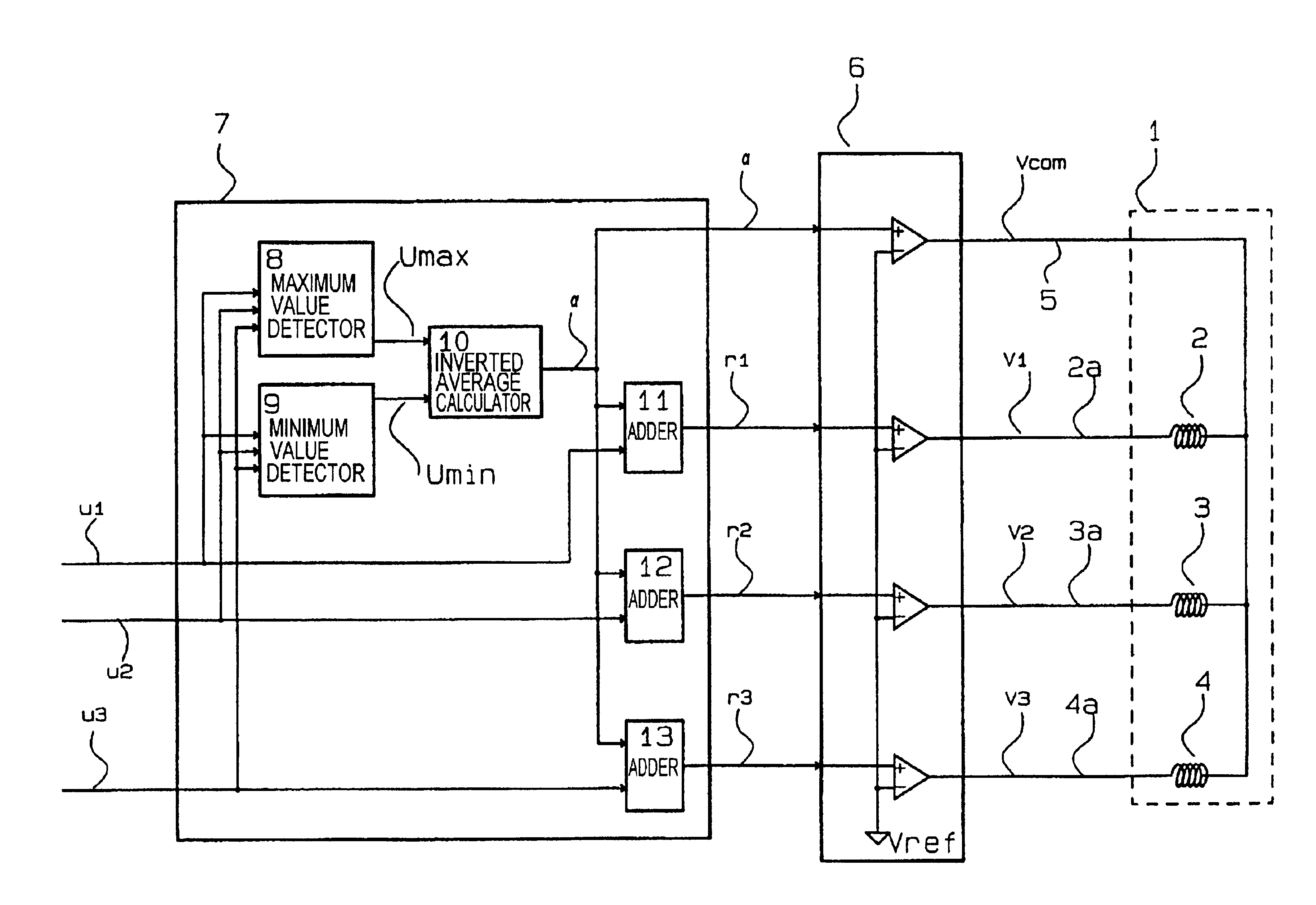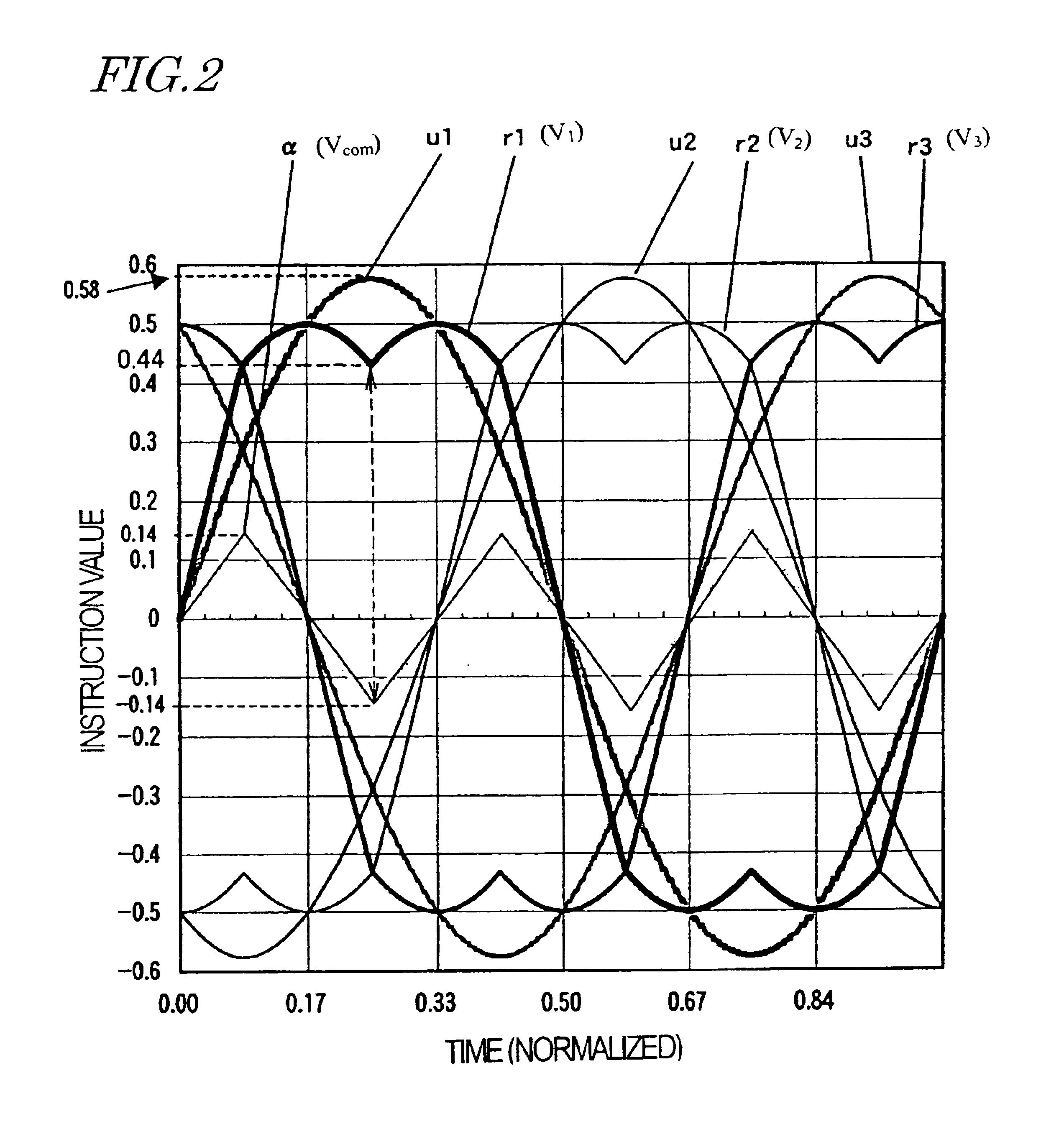Apparatus and method for driving circuit elements based on groups of instruction values
a technology of instruction value and circuit element, applied in the direction of digital signal error detection/correction, instruments, recording signal processing, etc., can solve the problem of reducing the maximum voltage that can be applied to those coils to a half disadvantageously, shortening the thrust on the lens being driven in the focus direction, and reducing the number of interconnection wires. the effect of the number of wires
- Summary
- Abstract
- Description
- Claims
- Application Information
AI Technical Summary
Benefits of technology
Problems solved by technology
Method used
Image
Examples
embodiment 1
[0068]A circuit element driver according a first specific preferred embodiment of the present invention will be described with reference to FIGS. 1 and 2. FIG. 1 is a block diagram illustrating the circuit element driver of the first preferred embodiment.
[0069]The circuit element driver of this preferred embodiment drives a spindle motor 1. The spindle motor 1 includes three coils 2, 3 and 4 as respective two-terminal circuit elements. These coils 2, 3 and 4 are connected together to a common terminal 5 at one terminal thereof and to individual terminals 2a, 3a and 4a at the other terminal thereof, respectively. The common terminal 5 and individual terminals 2a, 3a and 4a have been extended from the spindle motor 1. That is to say, four terminals have been extended for three coils.
[0070]The circuit element driver of this preferred embodiment includes a driving section 6 and a control section 7. The driver receives voltage instruction values u1, u2 and U3 as instruction values of a f...
embodiment 2
[0089]Hereinafter, a circuit element driver according to a second specific preferred embodiment of the present invention will be described. The second preferred embodiment to be described below relates to a disk drive including a lens driver and a circuit element driver for use to control the lens driver. FIG. 3 illustrates a lens driving section 20 of a lens driver. As shown in FIG. 3, the lens driving section 20 includes lens 19, tracking coils 21, focus coils 22 and tilt coil 23. The lens 19 is held by a lens holder 16 and the tracking, focus and tilt coils 21, 22 and 23 are fixed to the lens holder 16. The tracking coils 21 actually include four coils that are connected in series together and the focus coils 22 actually include two coils that are also connected in series together.
[0090]These three types of coils 21, 22 and 23 are connected in common to a conductive elastic member 17a at one terminal thereof. The tracking coils 21, focus coils 22 and tilt coil 23 are respectively...
embodiment 3
[0120]A circuit element driver according to a third specific preferred embodiment of the present invention is also used to drive a lens driver for an optical disk drive as in the second preferred embodiment described above. The circuit element driver of this preferred embodiment performs a pulse width modulation (PWM) control.
[0121]FIG. 8 is a block diagram illustrating a circuit element driver according to the third preferred embodiment. As in the second preferred embodiment described above, the lens driver 20 includes the tracking coil 21, focus coil 22 and tilt coil 23. As already described in detail for the second preferred embodiment, these three coils 21, 22 and 23 are connected in common to a single conductive elastic member at one terminal thereof and also connected to their respective conductive elastic members at the other terminal thereof. The former conductive elastic member, connected in common to the three coils 21, 22 and 23, and the latter three conductive elastic me...
PUM
| Property | Measurement | Unit |
|---|---|---|
| voltage | aaaaa | aaaaa |
| voltage | aaaaa | aaaaa |
| voltage | aaaaa | aaaaa |
Abstract
Description
Claims
Application Information
 Login to View More
Login to View More - R&D
- Intellectual Property
- Life Sciences
- Materials
- Tech Scout
- Unparalleled Data Quality
- Higher Quality Content
- 60% Fewer Hallucinations
Browse by: Latest US Patents, China's latest patents, Technical Efficacy Thesaurus, Application Domain, Technology Topic, Popular Technical Reports.
© 2025 PatSnap. All rights reserved.Legal|Privacy policy|Modern Slavery Act Transparency Statement|Sitemap|About US| Contact US: help@patsnap.com



